About the Trial
Six commercial lentil varieties were sown at Loxton in 2022 (Table 1). Each variety was sown at three seeding rates to target plant populations of 60, 90 plants and 120 plants m2. Each treatment combination was sown at two Times of Sowing (TOS): 5th May and the 26th of May.
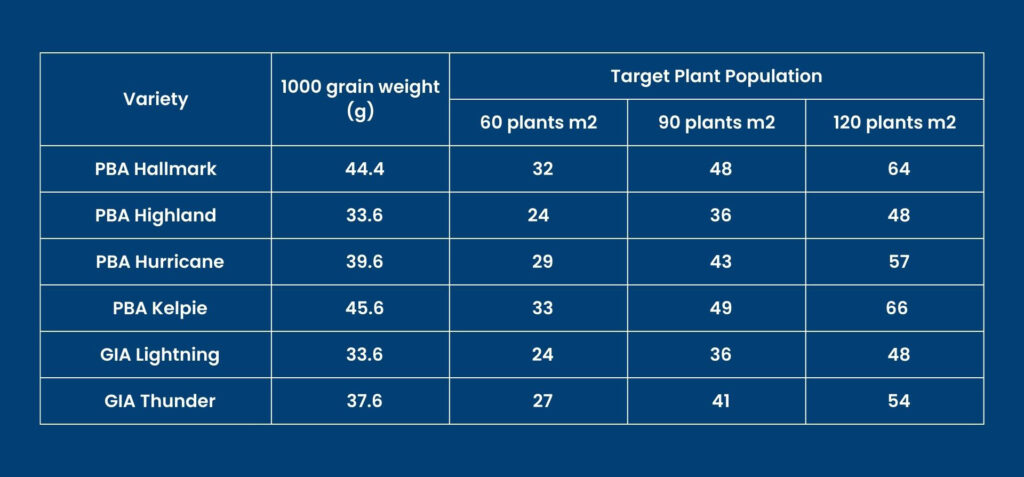
Results
Crop emergence
The emerged plant population was 20-25% higher than the target population for all plant density treatments (Table 2). Seeding rates were calculated using a field germination rate of 80%, therefore most of the planted seeds emerged. This is most due to the excellent soil moisture present at both sowing times following 88 mm of rainfall falling in April-May. There was no difference in emergence between varieties within each target plant population. There was also no difference in lentil emergence between the two sowing times.
| Target plants m2 | Emerged plants m2 |
| 60 | 76 |
| 90 | 112 |
| 120 | 143 |
Grain Yield
GIA Thunder was the highest yielding variety, with an average yield of 4.2t/ha across all treatments (Figure 1). The grain yield of GIA Thunder was significantly better than the other five varieties at TOS 1 and was superior to all varieties except GIA Lightning at TOS 2. PBA Kelpie had the lowest grain yield of all varieties at TOS 1, however it produced similar yields to the other varieties except GIA Thunder at TOS 2 (Figure 2)
Time of sowing generally had no impact in lentil yield in 2022 at Loxton, due to the very wet and cool spring which extended the growing season. The target plant population did effect grain yield, but only at TOS 2. Lentil grain yield increased in linearly from 3.3 t/ha for 60 plants m2 to 3.9 t/ha for the 120 plants m2 treatment at the later sowing date.
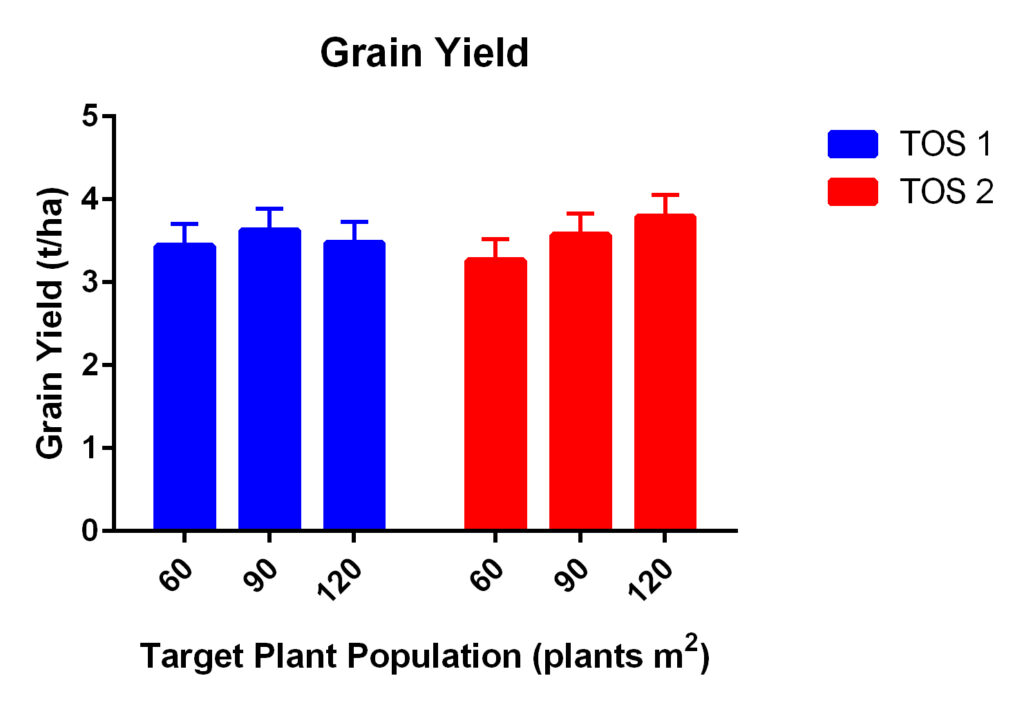
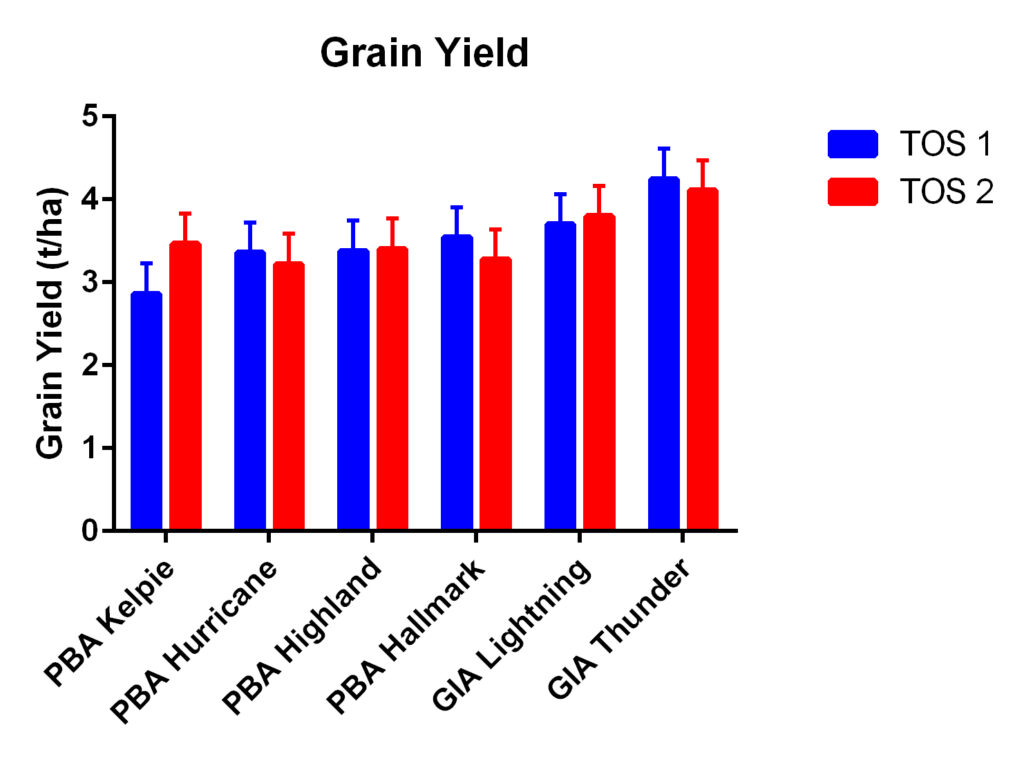
Grain Losses
Grain losses were greater with earlier sowing with 2.5 times more pods dropped and 3.2 times more seed shattered in the TOS 1 than in the TOS 2 treatments. The greatest seed losses were measured in PBA Kelpie, which experienced particularly bad seed shattering (Figure 3). Seed losses via pod drop were also higher in PBA Kelpie than in the other lentil varieties. GIA lightning had lower seed shatter than other varieties, however pod drop was similar between all varieties with the exception of PBA Kelpie.
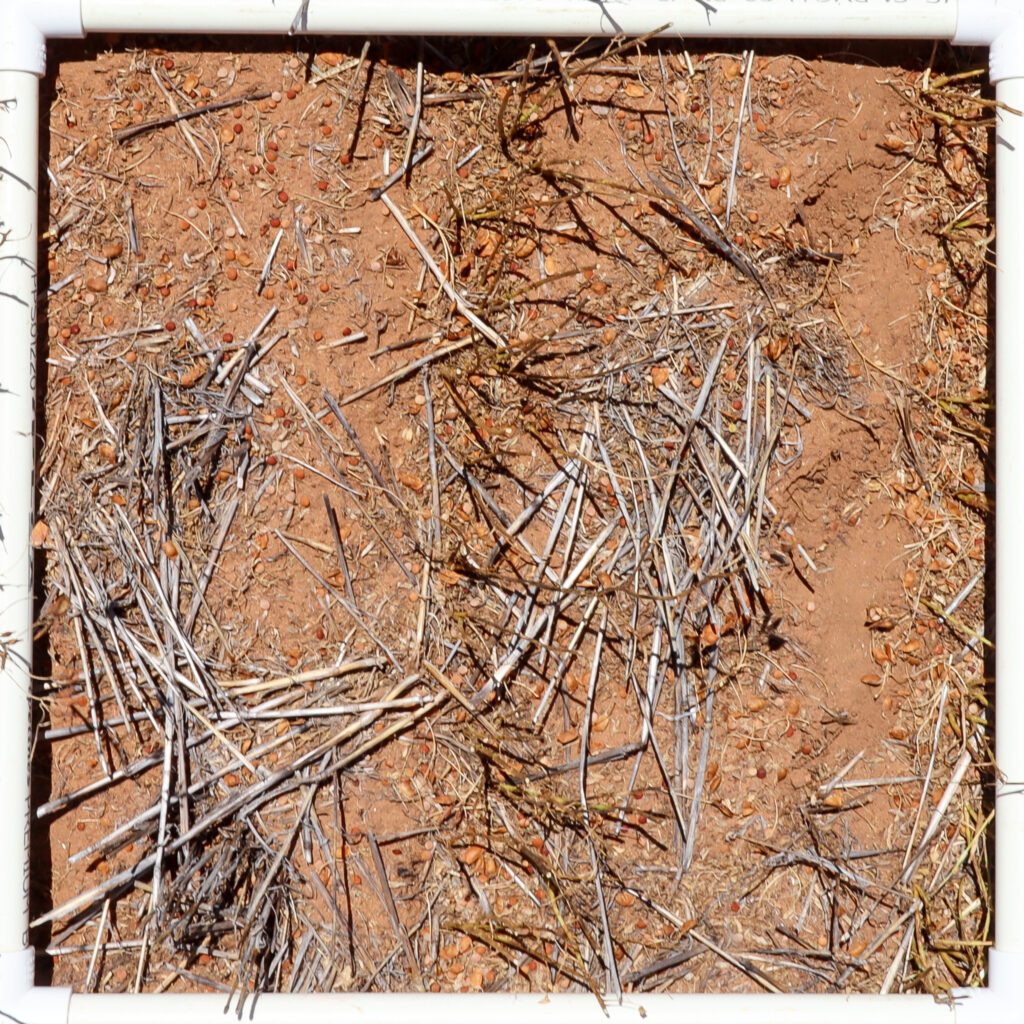
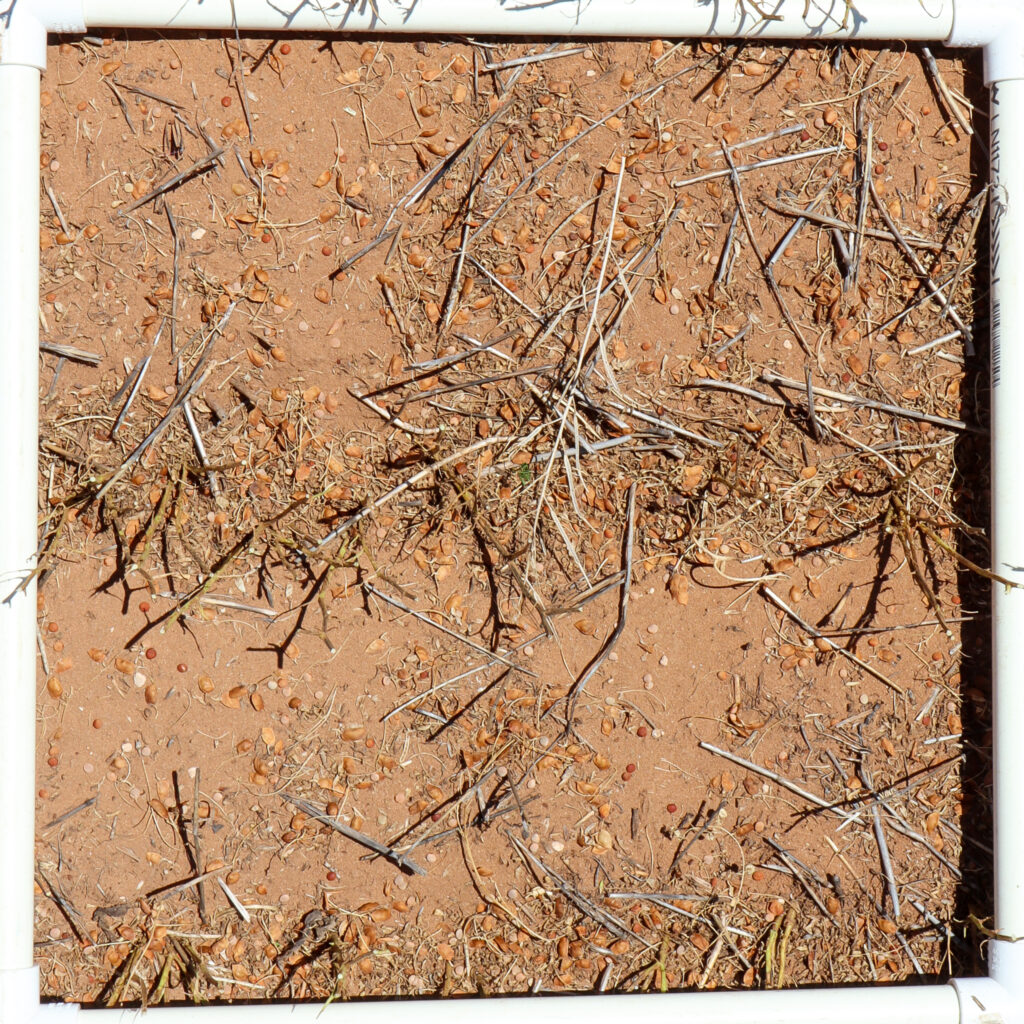


Acknowledgements
This virtual field day has been developed as part of the Mallee Sustainable Farming (MSF) project:
“Facilitating enhanced knowledge sharing of Mallee sustainable farming practices”
This project is supported by the Mallee Catchment Management Authority, through funding from the Australian Governments’ National Landcare Program.


